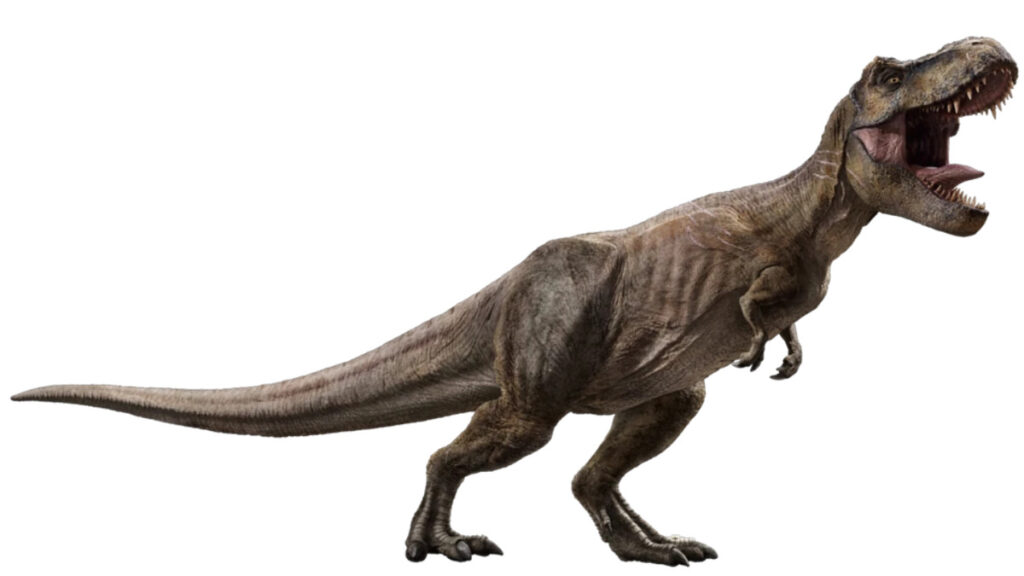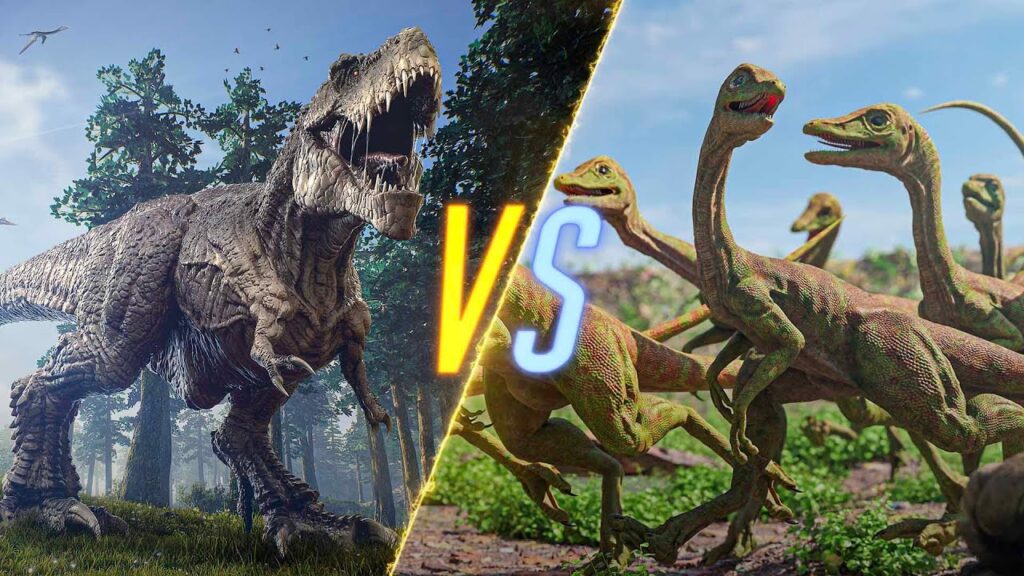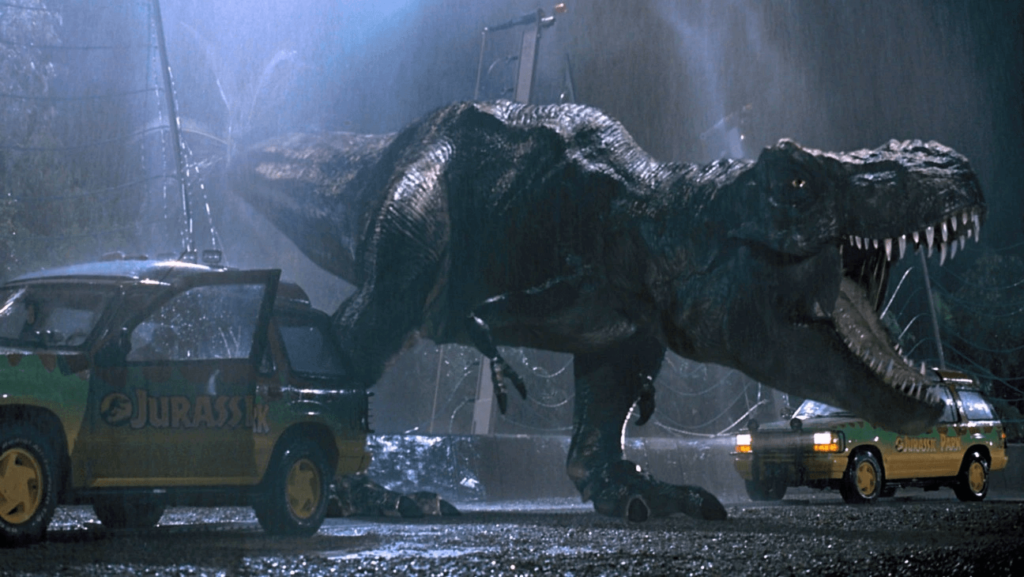Introduction
In the pantheon of prehistoric creatures, few dinosaurs have captured the imagination quite like the Tyrannosaurus rex. Often referred to as T. rex, this majestic creature is arguably the most iconic and recognizable dinosaur that ever walked the Earth.
With its massive size, powerful jaws, and ferocious nature, the T. rex remains a symbol of both fascination and fear.
In this article, we will delve into the world of Tyrannosaurus rex, exploring its discovery, characteristics, behavior, and its enduring legacy in the realm of paleontology and popular culture.
Key Attributes of Tyrannosaurus rex

| Name | Tyrannosaurus rex |
|---|---|
| Size | Approximately 12 to 13 meters (40 to 43 feet) in length |
| Age | Late Cretaceous (approximately 68 to 66 million years ago) |
| Diet | Carnivorous, primarily preying on other dinosaurs and large animals |
| Classification | Kingdom: Animalia, Phylum: Chordata, Class: Sauropsida, Superorder: Dinosauria, Order: Saurischia, Suborder: Theropoda, Family: Tyrannosauridae, Genus: Tyrannosaurus |
| Habitat | Varied ecosystems including open plains and forested areas |
| Distribution | Found in North America, specifically in the western United States and Canada |
| Unique Features | Large size, powerful jaws, sharp teeth, short arms with two-fingered hands, and strong hind limbs |
| Behavior | Apex predator, believed to be a slow but powerful hunter |
| Prey | Preyed on a variety of dinosaurs and other large animals in its ecosystem |
| Cultural Significance | One of the most famous and iconic dinosaurs, widely recognized in popular culture |
| Fossil Record | Well-preserved fossils discovered in North America, providing extensive knowledge about its anatomy and lifestyle |
The Discovery of Tyrannosaurus rex
Tyrannosaurus rex was first discovered by paleontologist Barnum Brown in 1902, in what is now known as Montana, USA. The finding of its fossilized remains sparked immense interest in the scientific community and marked the beginning of a new era of dinosaur research.

Over the years, numerous fossils of T. rex have been unearthed, each contributing to a deeper understanding of this magnificent dinosaur’s life.
Tyrannosaurus rex’s Family and Classification
In the realm of paleontology, understanding the relationships between different dinosaur species is crucial. Tyrannosaurus rex belongs to the family Tyrannosauridae, which includes other formidable predators like Albertosaurus and Gorgosaurus.
This classification is based on shared anatomical traits and evolutionary history. These dinosaurs are part of the larger theropod group, characterized by their bipedal stance, sharp teeth, and predatory nature.
Physical Characteristics of Tyrannosaurus rex
T. rex was a giant carnivorous dinosaur that roamed the Earth during the Late Cretaceous period, approximately 68 to 66 million years ago. With an average length of 40 feet and standing about 15 to 20 feet tall, this apex predator weighed in at an astonishing 7 to 9 tons.

Its distinct features included a massive head with powerful jaws lined with sharp, serrated teeth, perfect for tearing through the flesh of its prey.
Habitat and Environment
Tyrannosaurus rex inhabited the ancient floodplains and forests of what is now western North America. The region offered a diverse range of ecosystems, allowing the T. rex to thrive and dominate the food chain. Its excellent adaptations and predatory skills made it the undisputed ruler of its habitat.
Hunting and Feeding Behavior
T. rex was a fearsome hunter, capable of chasing down its prey with remarkable speed despite its massive size. It primarily hunted herbivorous dinosaurs like Triceratops and Edmontosaurus, using its powerful jaws to deliver a lethal bite.
The discovery of bite marks on fossilized bones provides valuable insights into the hunting behavior of this prehistoric giant.
Extinction and Theories
The extinction of Tyrannosaurus rex, along with other dinosaurs, has been a subject of great debate among scientists. One prevailing theory suggests that a cataclysmic asteroid impact caused a chain reaction of events leading to their downfall.
However, ongoing research continues to shed new light on this mystery, and the story of T. rex’s extinction remains an enthralling topic for researchers.
Social Behavior of Tyrannosaurus rex
The perception of Tyrannosaurus rex as a solitary predator is being challenged by recent findings. Fossil discoveries hint at the possibility of social behaviors among these dinosaurs.
Fossils found in close proximity or evidence of bite marks on bones from other T. rex individuals raise questions about interactions between members of the same species.
However, the extent of these interactions and whether they were cooperative or competitive in nature is still a subject of investigation.
Paleontological Excavations and Findings
Paleontologists worldwide have dedicated their efforts to excavating and studying Tyrannosaurus rex fossils.
These discoveries have allowed researchers to gain valuable insights into the lives of these ancient giants, painting a vivid picture of their behavior, anatomy, and ecosystem.
Comparisons with Other Dinosaurs
T. rex vs. Velociraptor

One of the most common misconceptions in popular media is the portrayal of T. rex and Velociraptor as mortal enemies. In reality, these two dinosaurs lived in different time periods and locations, and there is no evidence of direct interactions between them.
T. rex vs. Velociraptor: Who Would Win in a Fight?
| Category | T. rex | Velociraptor |
|---|---|---|
| Size | Much larger (40 feet long) | Smaller (6 feet long) |
| Strength | Immensely powerful bite and jaws | Sharp claws and agile movements |
| Armor | Thick skin, possibly some scales | Feathers for insulation |
| Weapons | Enormous teeth and crushing bite | Sharp, retractable claws |
| Speed | Moderate speed despite size | Agile and swift |
| Strategy | Likely ambush predator | Cooperative hunting strategies |
| Experience | Apex predator, top of the food chain | Cunning pack hunter |
| Defense Mechanisms | Limited, primarily size and strength | Agile evasive movements |
| Outcome | T. rex’s size and power could overpower Velociraptor in direct confrontations | Velociraptors might rely on teamwork and speed to weaken T. rex |
T. rex vs. Spinosaurus

The rivalry between T. rex and Spinosaurus has been a topic of much interest. While both were apex predators, their physical characteristics and habitats differed significantly.
The debate over which would win in a hypothetical battle remains a favorite discussion among dinosaur enthusiasts.
T. rex vs. Spinosaurus: Who Would Win in a Fight?
| Category | T. rex | Spinosaurus |
|---|---|---|
| Size | Comparable in size (40 feet long) | Possibly larger (up to 50-59 feet long) |
| Strength | Immensely powerful bite and jaws | Strong jaws and aquatic adaptations |
| Armor | Thick skin, possibly some scales | Thick, bony plates on its back |
| Weapons | Enormous teeth and crushing bite | Long, crocodile-like snout and sharp teeth |
| Speed | Moderate speed despite size | Adapted for semi-aquatic lifestyle |
| Strategy | Likely ambush predator | Potentially fish and aquatic prey hunter |
| Experience | Apex predator, top of the food chain | Adapted to aquatic environments |
| Defense Mechanisms | Limited, primarily size and strength | Armor and aquatic habitat may provide protection |
| Outcome | T. rex’s superior bite force and robustness might give it an advantage | Spinosaurus’s aquatic adaptations could impact the fight, but T. rex’s bite might still prove dominant |
T. rex’s Unique Adaptations
What set Tyrannosaurus rex apart from other dinosaurs were its unique adaptations tailored for its predatory lifestyle. Its enormous size and robust build allowed it to exert immense force while biting, while its powerful legs enabled rapid movement.
Notably, its two-fingered hands, though seemingly small, were remarkably strong and could grip prey effectively. These adaptations combined to make T. rex an apex predator of its time.
The Debate Over T. rex’s Speed
Estimating the speed of an extinct dinosaur is a complex task that requires a combination of biomechanics, fossil evidence, and computer simulations. Researchers have proposed a wide range of speeds for T. rex, from a slow walk to a brisk jog.
Some studies suggest that its size and weight might have limited its ability to run quickly, while others argue that its muscular structure and overall design could have allowed it to reach higher speeds.
The Hunt for T. rex Fossils
Excavating T. rex fossils is an intricate and meticulous process that requires both scientific expertise and patience. Paleontologists follow a systematic approach, starting with identifying potential fossil sites through geological surveys.

Once a promising site is located, careful excavation begins, often involving delicate tools to expose the fossilized bones without causing damage.
The recovered fossils are then prepared, cleaned, and studied to reveal insights into T. rex’s anatomy, behavior, and ecology.
Caring for T. rex Fossils in Museums
Preserving T. rex fossils for future generations involves a careful combination of science and art. Fossils are fragile, and exposure to air, light, and humidity can lead to deterioration.
Museum professionals employ specialized techniques to protect and display these precious specimens. Fossils may undergo stabilization treatments, such as consolidating fragile bones, before being exhibited in controlled environments.
Museum exhibits play a crucial role in education and outreach, inspiring awe and curiosity in visitors of all ages.
T. rex and Avian Dinosaurs
Recent scientific research has unveiled a surprising connection between T. rex and modern birds. Birds are considered the living descendants of theropod dinosaurs, a group that includes T. rex. Shared features such as skeletal structure and the presence of feathers provide compelling evidence of this evolutionary relationship.
The discovery challenges our understanding of how these fearsome predators evolved into the diverse avian species we see today.
Fact vs. Fiction
As with many legendary creatures, myths and misconceptions have woven themselves into the narrative of Tyrannosaurus rex. Some depictions in media may exaggerate certain traits or behaviors for dramatic effect.
It’s essential to separate factual information from artistic interpretation when learning about T. rex. By turning to scientific research and established paleontological findings, we can form a more accurate and nuanced understanding of this awe-inspiring dinosaur.
Tyrannosaurus rex in Popular Culture
The iconic image of Tyrannosaurus rex has been immortalized in various forms of art and sculpture throughout history. From scientific illustrations to cinematic reconstructions, artists have attempted to visualize this mighty creature.

In the early days of paleontology, artists relied on scientific knowledge to create accurate depictions. As time passed, T. rex’s appearance evolved in art, sometimes influenced by the prevailing theories of the time.
Today, artists combine scientific accuracy with creative interpretation to bring T. rex to life in stunning detail.
Tyrannosaurus rex has left an indelible mark on popular culture. From movies to books to video games, the image of this mighty dinosaur continues to captivate people of all ages.
Its portrayal in films like “Jurassic Park” has solidified its status as the quintessential dinosaur in the public’s imagination.
Conclusion
Tyrannosaurus rex remains an enduring symbol of the fascinating world of dinosaurs. Its colossal size, fearsome appearance, and dominant position in the ecosystem make it an object of both wonder and intrigue.
From its discovery to its portrayal in popular culture, T. rex continues to captivate the imaginations of people worldwide.
FAQs
- How big was Tyrannosaurus rex?
Tyrannosaurus rex reached an average length of about 40 feet and stood around 15 to 20 feet tall. - What did T. rex eat?
T. rex was a carnivorous dinosaur and primarily hunted herbivorous dinosaurs like Triceratops and Edmontosaurus. - When did Tyrannosaurus rex live?
Tyrannosaurus rex lived during the Late Cretaceous period, approximately 68 to 66 million years ago. - What caused the extinction of T. rex?
The exact cause of T. rex’s extinction is still a subject of scientific debate, with the asteroid impact theory being one of the leading hypotheses. - How has T. rex impacted popular culture?
T. rex’s portrayal in popular media, particularly in movies like “Jurassic Park,” has made it an iconic and beloved figure in popular culture.
